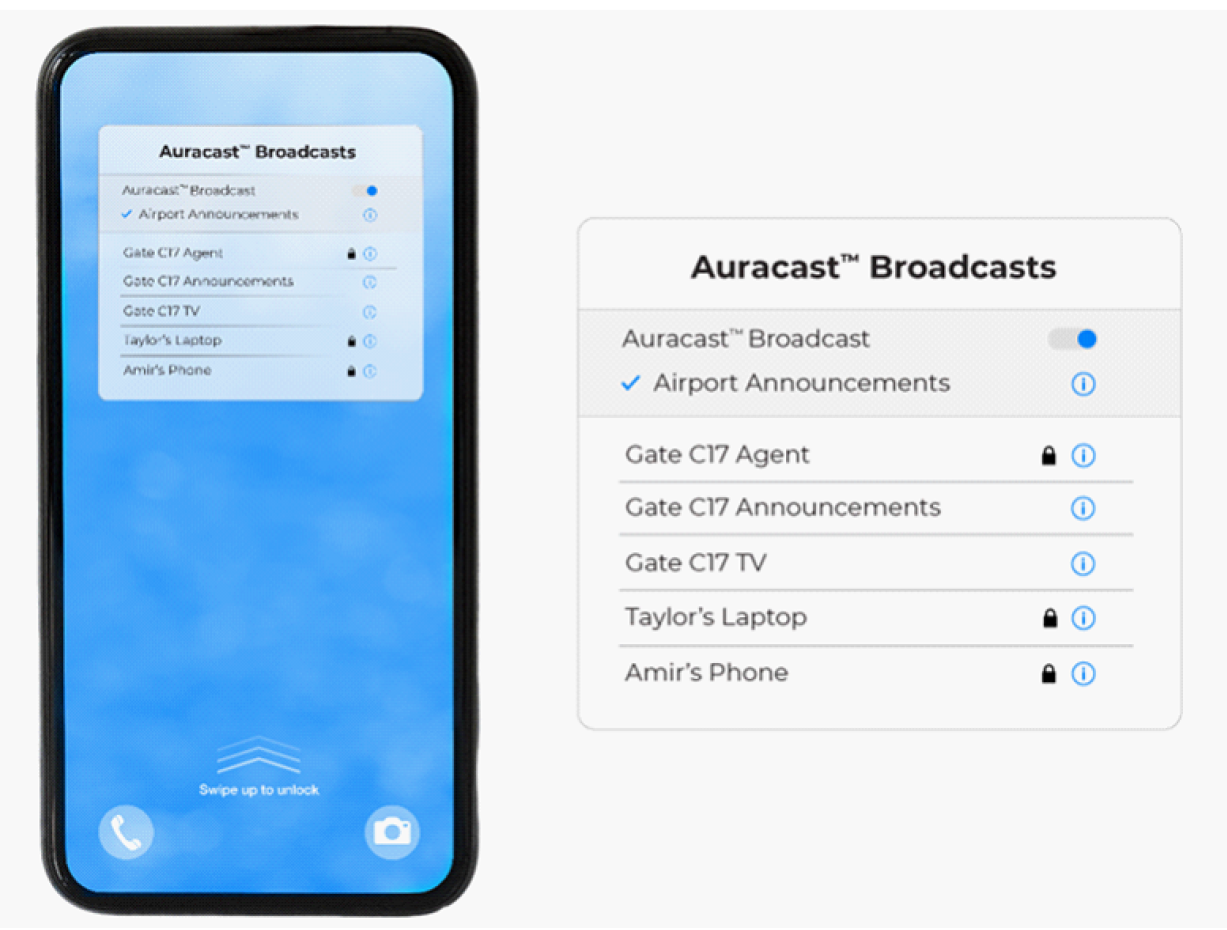March 3rd is known to the global health community as World Hearing Day. The World Health Organization (WHO) created this event to recognize the roughly 20% of the world’s population that lives with hearing loss. That’s more than 1.5 billion people!
To commemorate this event, ABI Research will take a deep dive into Bluetooth Low Energy (LE) Audio. Bluetooth LE audio is a groundbreaking development at the intersection of audio and technology that promises to shape the industry in profound ways. It offers a game-changing advancement to assistive listening devices and is set to redefine the audio landscape.
Beyond its notable enhancements in power consumption, latency, and audio quality, LE Audio brings a new era of standardization, enabling market categories like true-wireless headsets and hearables to flourish. It also presents an opportunity for Bluetooth wireless Integrated Circuit (IC) vendors to capitalize on this expanding market segment.
Additionally, LE Audio's broadcast capabilities unlock innovative usage scenarios and product categories, including personal audio sharing, multi-headset connections to source devices like Televisions (TVs), and Auracast applications within public environments. Prepare to witness the evolution of audio interaction across diverse market verticals as LE Audio transforms the industry with its professional prowess and potential.
What Is Bluetooth LE Audio?
Bluetooth Low Energy (LE) Audio is the next generation of Bluetooth audio, doing away with Classic Basic Rate (BR)/Enhanced Data Rate (EDR) radios. This new audio technology will increasingly play a central role in how people listen to content and engage with their environment.
In addition to lower power consumption and higher audio quality, Bluetooth LE Audio opens the door to several exciting features, namely multi-language streaming and Auracast™ broadcast audio.
Considering that 57% of people plan to continue using their audio devices more often, even in a post-pandemic world, Auracast™ will be crucial in attracting consumers with new use cases.
In addition, Bluetooth LE Audio is incredibly beneficial to hearing aid users because it removes the need for external devices to integrate with other applications. Those with hearing loss will be introduced to a more seamless assistive listening experience.
As the chart below forecasts, ABI Research expects a cumulation of more than 8 billion devices to ship with Bluetooth LE Audio capabilities by 2027. Most devices will support Classic Audio in addition to LE (dual-mode).
A Brief History of Bluetooth LE Audio
Back in 2014, the European Hearing Instrument Manufacturers Association (EHIMA) joined forces with the Bluetooth Special Interest Group (SIG) to develop a standard for hearing aids. The idea was to enable seamless audio through Bluetooth for assistive listening device users without requiring separate accessories. Moreover, these devices would be interoperable with any brand developing LE Audio technology.
Through these efforts, it was clear that creating a new audio standard that addresses the shortcomings of Classic Audio would bring value to the broader Bluetooth market. And that’s when the largest Bluetooth specification project to date, known as Bluetooth LE Audio, was born.
Bluetooth LE Audio Benefits
Because of the new features inaugurated in Bluetooth specification 5.2, LE Audio provides the following benefits for users:
- Improved audio quality
- Lower latency
- Reduced power consumption
- Better interoperability
- Easier device development
- New audio device types
Additionally, novel audio sharing applications, known as Auracast™ broadcast radio, allows an unlimited number of users to tune into a stream or a public announcement at the same time.
To learn more about the opportunities and challenges associated with Bluetooth LE Audio, check out the YouTube video below.
Technology Underpinnings of Bluetooth LE Audio
LE Audio devices use the novel Low Complexity Communications Codec (LC3) audio codec. Impressively, the LC3 codec can significantly improve the existing Sub-Band Coding (SBC) codec using an up to 50% lower bitrate. With fewer battery needs, product developers can create new form factors that were never possible before.
Because Bluetooth LE Audio devices support flexible bitrates, products can be differentiated more easily. For example, if developers want to create a device with the best audio quality possible, they can leverage the LC3 bitrate of 345 Kilobits per Second (kbps). Or another team of developers focused on battery life can use the 160-kbps bitrate because it uses far less power.
Bluetooth Classic Audio vs Bluetooth LE Audio
The primary difference between Bluetooth Classic Audio and Bluetooth LE Audio is that the latter uses less power. Indeed, devices like smart glasses, smartphones, and smartwatches can leverage the quality and synchronization benefits of LE Audio, while draining less battery life.
Although many vendors have already addressed these challenges with proprietary solutions, Bluetooth LE Audio development can save costs, assuming that Classic Audio is not also being supported. ABI Research analysts have noted that some industry players assert that lower-cost LE-only earbuds have the potential to hit a similar price point as wired earbuds.
How Can Bluetooth LE Audio Help People with Hearing Loss?
There’s a long list of ways in which Bluetooth LE Audio can benefit users with hearing loss. From personal audio sharing to multi-language streaming in public venues, LE Audio offers a far superior audio experience for end users than Classic Bluetooth Audio.
A driving force behind Bluetooth LE Audio’s growth will be Auracast™ broadcast audio, a location-based broadcast application with a User Interface (UI) similar to Wi-Fi hotspots. Auracast™ enables various audio streams to be sent to a limitless amount of receivers (devices) within range using Isochronous Channels (ISOC).
The following examples demonstrate typical applications of Bluetooth LE Audio in both private and public settings:
- Smartphone users can share audio from music or videos they are playing on their devices with multiple friends or family.
- Someone on a treadmill at a gym can tune into a silent TV.
- Users can directly connect with their smartphones for calls, audio, and video content—free from vendor lock-ins and the need for intermediary accessories.
- Internet of Things (IoT) smart home appliances like thermostats or sensors could provide a readout to the user.
- A museum tour guide can communicate more clearly with tourists who are equipped with Bluetooth 5.2/5.3-compatible headsets.
- International conference attendees can use their own devices to listen to a presentation in their native language.
- Air travelers can select the Auracast™ broadcast for their specific terminal, blocking out unnecessary announcements.
Right now, Bluetooth LE Audio market players are more concentrated on large-scale applications. Meanwhile, private, one-to-one applications, such as customer checkout, are more of a long-term, yet significant, opportunity.
Figure 1: Proposed Auracast™ Broadcast Audio User Interface (Source: Bluetooth SIG)

Conclusion
Although smartphones are, by far, the most common device type used for Bluetooth LE Audio, there are undoubtedly other device types that people with hearing loss will take advantage of. Some examples include true-wireless (e.g., cordless and wireless earbuds), PCs, tablets, gaming accessories, TVs, and wearables.
New and as yet undiscovered Bluetooth LE Audio use cases within smart home and Internet of Things (IoT)-related applications are likely to emerge, providing audio updates and new methods of voice interaction with everyday appliances and automation systems. Combined, these use cases are expected to transform the frequency and ways in which we interact with audio on a daily basis.
To better understand these market opportunities (and more), as well as next steps for Bluetooth vendors, read ABI Research’s How to Capture a Slice of the LE Audio Market Research Highlight. This content is part of the company’s Wi-Fi, Bluetooth & Wireless Connectivity Research Service.







